If you missed the beginning of this story, you can check it out in this link the Magic: the Gathering video games from 1997 to 2008.
Magic: The Gathering: Duels of the Planeswalkers - Series
We started our second half with the Duels of the Planeswalkers series in 2009.
After the success of the first title, which garnered great reviews and sales, Wizards of the Coast decided to create 4 more titles in the following years, one each year. With the same look, attractiveness and ease of play, receiving good reviews throughout each release, but each of them was something separate, that is, from one year to the next you had a new game independent of everything that had been built until there, being forced to restart his campaign.
Ad
If you ask those who had the experience of playing them, depending on the interaction with the game, some will remember that they were good, others will say that they fulfilled the need for a hobby, but overall the taste seems a bit bitter to have tried so hard, but having its progress restarted with each new version and having simply ended up in the 2015 version with a poor version of content, despite the first 4 titles having received excellent reception.
Magic: The Gathering: Duels of the Planeswalkers - Inception
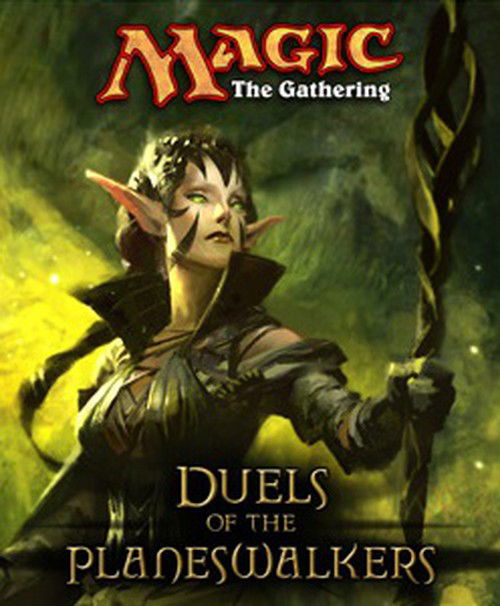
The release that can be marked as a sales success was the first Magic: The Gathering: Duels of the Planeswalkers, available in 2009 for Xbox 360 and in 2010 for PlayStation 3 and Windows.
In just 5 weeks of launch on the first platform, the game was downloaded more than 440,000 times and 170,000 games were sold in that time, guaranteeing the title among the ten most played in the history of Xbox Live and the highest ranked title in the first two weeks of release. In 2011, over half a million units were sold on the Xbox Marketplace alone!
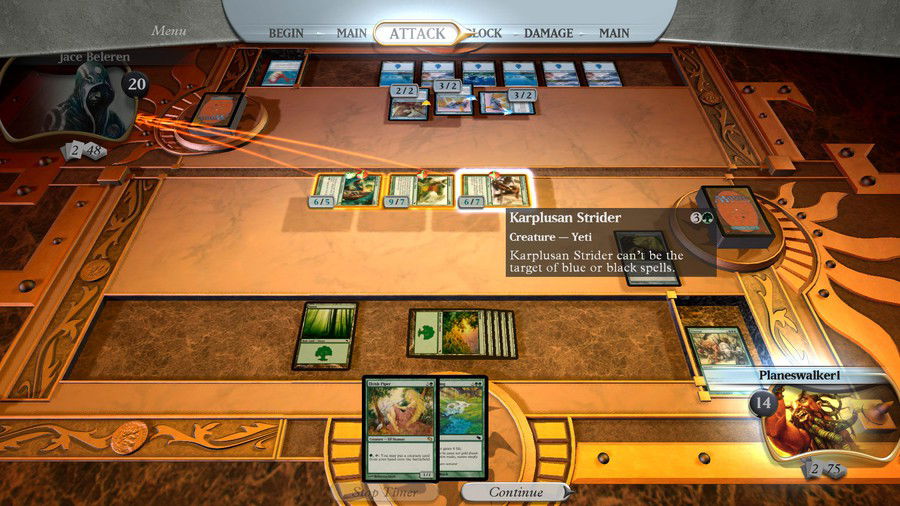
With a beautiful interface, the game is attractive to any audience, as it is easy and accessible. Even if you've never seen Magic in your life, you're sure to spend hours in front of the screen in battle after battle. There's not much to say after so many adjectives — maybe delivering the basics in electronic media, and doing it well, was what made this success possible.
Game Modes
The tutorial is rich in explanations for any beginner, and the interface is easy to use.
The game includes a Campaign Mode to duel multiple opponents Versus AI for new decks and cards. There is also the Challenge Mode where the player must find the right combination of moves in a single turn to defeat the opponent.
There is a Single and Co-op versus Computer game mode (including "Two-Headed Giant", a variant format where both players share their life total and play together to defeat opponents).
Players can also play in Casual Competitive Games or Ranked on Xbox Live against up to three opponents.
In the PC version, players can compete against each other, but the second player is required to use a gamepad instead of a keyboard or mouse. Greatly simplifying the gameplay to be more accessible, there is no deck building, players only have access to a limited number of preconstructed decks, however as you progress through the challenges you will unlock new decks and cards that can be replaced in certain decks to improve them.
The use of mana (when tapping lands) automatically brought a positive point to this game, as I mentioned, always trying to make it easier and more friendly for those who have never seen it or just want to have fun with the card game and, like Magic Arena, actions have a timer to keep time.
New Expansions
Also in 2009, additional content was released for the game, Duel the Dragon, which added 3 new decks, 6 more campaigns including a new boss and several new challenges.
Ad
In 2010, the second expansion came out, enabling 3 new cards for each existing deck, new decks and the ability to use "Eons of Evil" by famous rival Nicol Bolas. This second expansion was also important to fix several bugs.
At the end of 2010, the third and final expansion of the game came out. It made available 3 more cards for each deck, as well as the previous one, new challenges and new levels for the Two-Headed Giant mode. It also made available 3 more decks, including "Master of Shadows" used by Sorin Markov in the last expansion's campaign and "Root of the Firemind", the first red/blue deck in the game.
Later we will talk about the “franchise” and sequel that this game opened in the world of Magic: The Gathering.
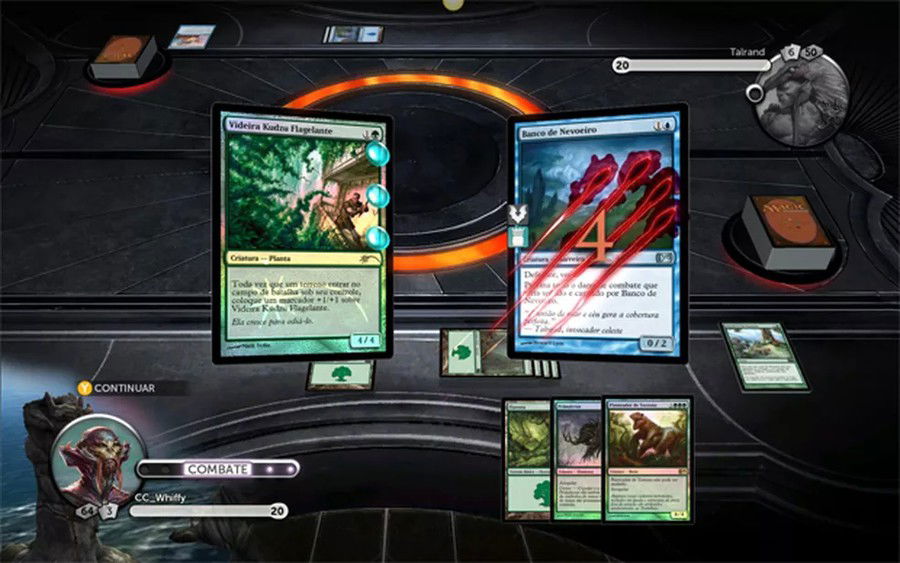
Fun fact: This video game was so successful that Wizards of The Coast created 5 printed decks inspired by it and that were made to play the physical game back in 2010, perhaps the beginning of the idea to attract new players who could play the same deck from the electronic medium to the physical game.
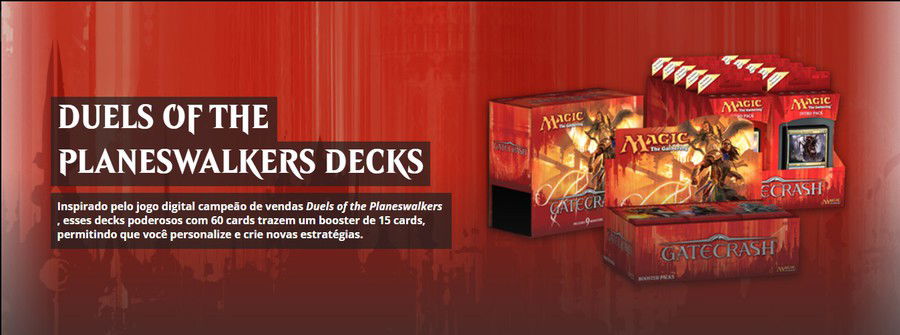
Source: WotC website
DotP 2012
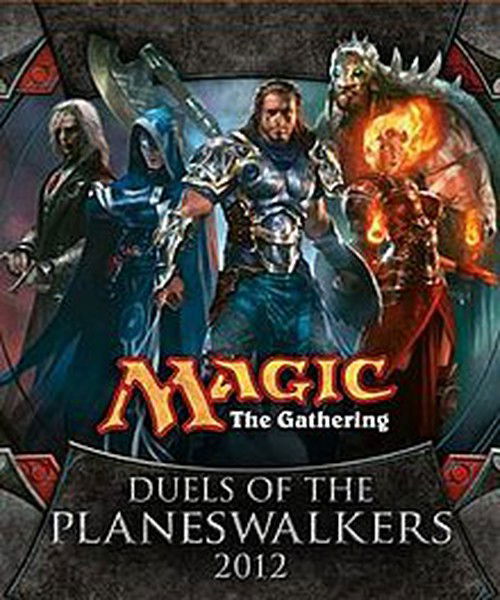
Despite the name, this game was released in 2011, created to be the continuation of Magic: The Gathering: Duels of the Planeswalkers, but a new independent game with no connection to the previous one, as all 5 games in this series were.
There was an expansion called Ascend into Darkness in the same year, with the addition of some new decks and cards before the next game was released. It is the same as the previous game, but looking like an expansion, with little or no modification to the game battlefield and effects. The game is classic with 60 cards, 20 life points and 1v1 combat.
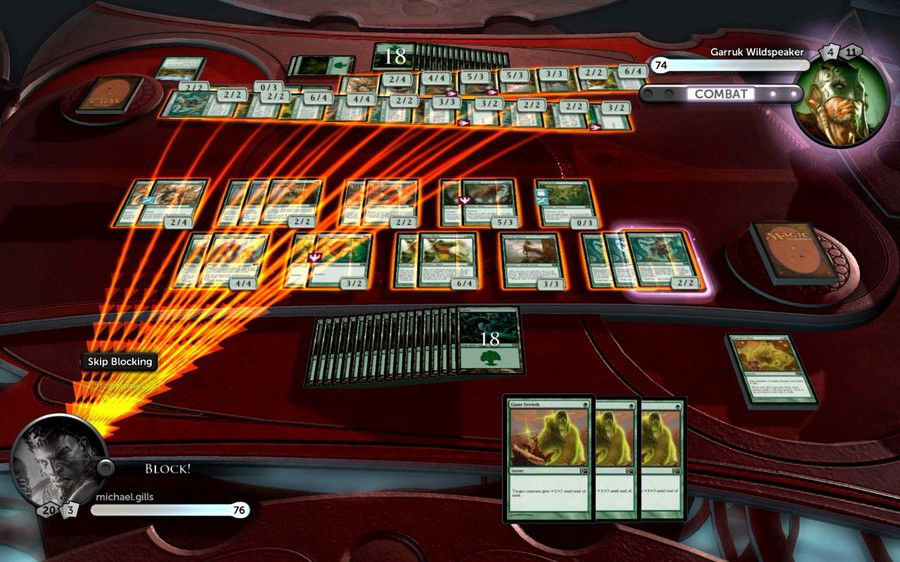
There are three campaigns in total: a Starter Campaign, a Challenge Campaign and a campaign with the new Archenemy mode, perhaps the biggest novelty between games. Each of the three campaigns has eleven missions. Puzzles, scenarios in which the player takes control of a side of a match that has already been played and needs to achieve victory are back and unlike the first one, where the puzzles were a standalone mode, the puzzles in DotP 2012 are integrated into the campaign as unlockable side missions. We can't forget to mention that there is Multiplayer mode available for DotP 2012, as well as all DtoP.
Despite continuing with a good reputation, most critics expected more compared to its predecessor, but managed to please a lot as some features were fixed, such as the possibility of removing unwanted cards from the deck being something native, different from the original DotP.
DotP 2013
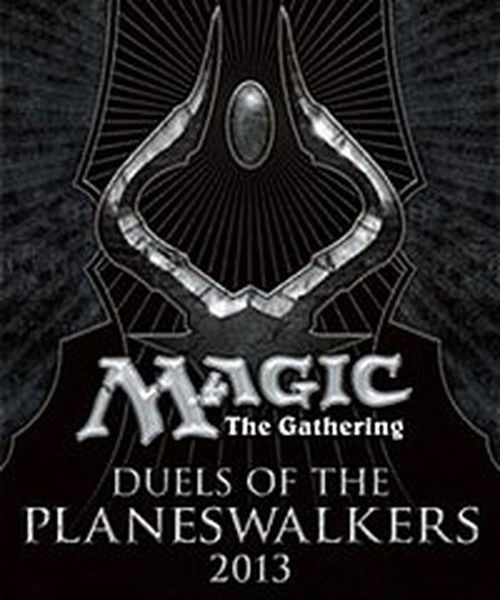
DotP 2013 was released in 2012 for Steam, Xbox Live Arcade, PlayStation Network and iPad and is the third game in the series.
Ad
The gameplay, fluidity and gameplay remain as good as the previous ones. However, this one received the title of number one sales game in June this year on PSN, perhaps due to the amount of news it managed to deliver.
Starting with the most attractive and that makes you want to play just because of that, is the inclusion of Planechase in place of Archenemy.
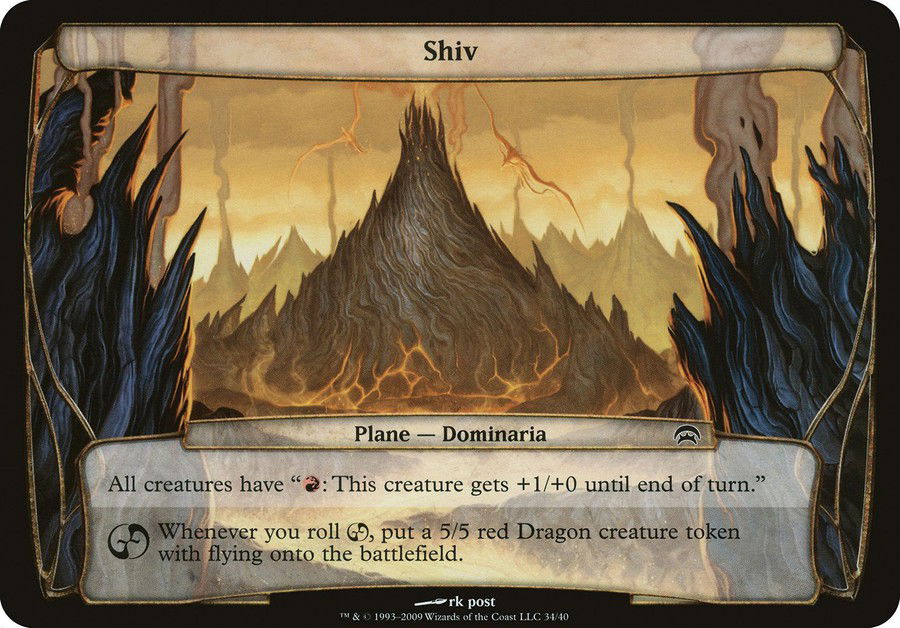
Planechase is a game mode that also exists in tabletop as a casual format, with 2 or more players that face each other in the traditional multiplayer style, each for themselves, but with the addition of an extra deck shared by all: The planes deck.
The plane deck must be shuffled and face down on the table, one card being revealed at a time: the active plane. Basically, this deck is made up of cards with static or triggered effects referring to each plane that can greatly modify the game dynamics.
A plane is always active, and remains so until someone decides to change it, or rather, planeswalk. To switch planes, each player, in Sorcery Speed, can roll the planes die (1 free time on their turn and then pay 2 mana per roll cumulatively). If you hit the planeswalk icon, the plane card leaves play and a new plane, revealed from the deck, enters.
In addition, the die has the symbol of chaos, and if it is hit during the roll, an action is triggered, from destroying everything on the battlefield, to changing the order of turns, which drastically changes the game's strategy. This format is a lot of fun and as a result, it was very well accepted, since the platform continued to be easily accessible and stunning too.
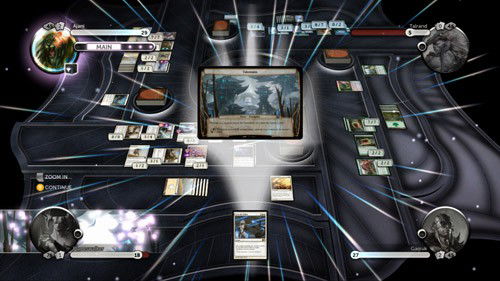
In Story Mode you face off against other AI-controlled planeswalkers until you reach the final battle against Nicol Bolas. In addition to this mode, there are new matches called Encounters, which challenge you to face match scenarios with unofficial decks, with a single strategy; for example, your opponent each turn will put a creature token into play. But believe me, some are quite difficult to deal with even knowing what will happen every turn.
Deck customization has always been a point of contention for critics of the series. There are 10 decks to unlock by playing the campaign, and you unlock 30 extra cards per deck. Each match you win in Standard modes unlocks a single card for the deck you are using, You could also pay 99 cents to unlock all cards in a deck. You're still stuck with 24 lands per deck, which is far too much for some lists, and you still can't create a custom deck from scratch.
Naturally, the game continues to offer Multiplayer modes for everything that makes sense. You can play Duels, Free-for-All and Planechase online, with matchmaking options or hosting a custom game, but now without the famous two-headed giant.
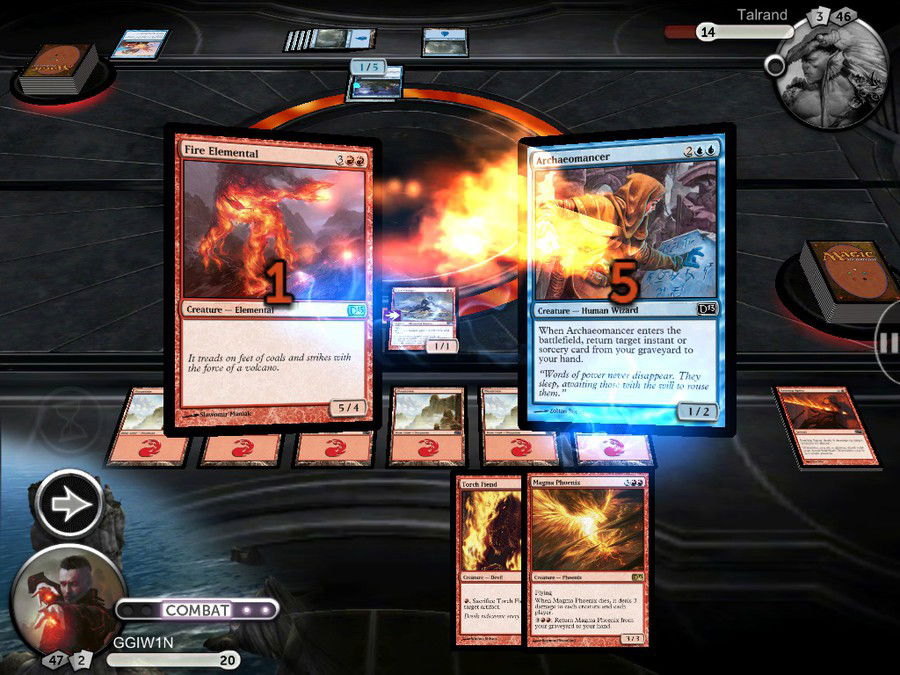
This time, the game contributed to Marketing more than the previous 2, featuring in-game announcements related to the release of the real-life cards. It also allowed veteran Magic: the Gathering players to play with the new cards before they were actually released.
Ad
Additionally, a code was provided with every purchase of the game, allowing buyers to redeem one of three (depending on platform) 6-card booster packs at WPN stores. The packs featured an alternately designed card that was specific to the platform the video game was purchased on, and five other (non-exclusive) cards.
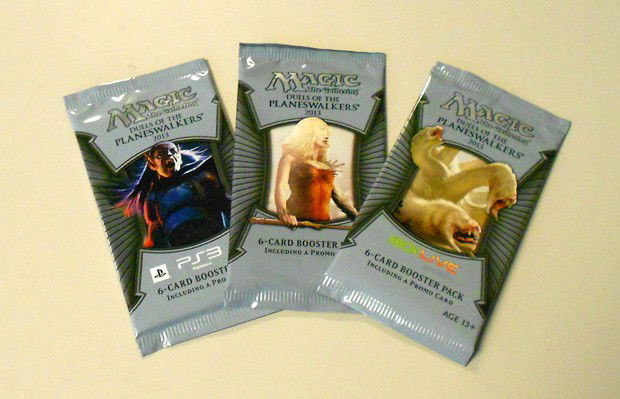
And finally, but worth mentioning, is that as this version was made available on iPad, the reception (although still small) was very positive in having the game experience with the touch screen. It was a good thing for the future of the game, earning extra points and showing that there was still room for improvement.
DotP 2014
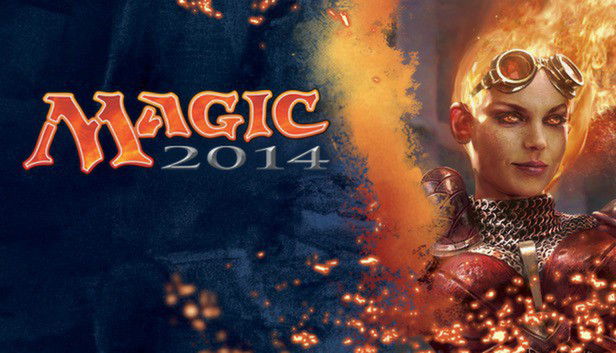
With the success of its predecessors, DotP 2014 was released in 2013 on more platforms than the previous ones: PC, Xbox 360, PlayStation 3, iPad and for the first time on Android devices, bringing the game to smartphones. With the same structure and gameplay, but now with a new Sealed game feature and with that, the novelty of opening booster packs. In this new game mode, each player opens 3 booster packs and must assemble the deck with the cards that come in them.
The reviews were very positive, above 80% in several places, mainly because of something that had been desired and expected by players for a long time: with the opening of booster packs, the option to edit and customize the deck the way you want, made it possible.
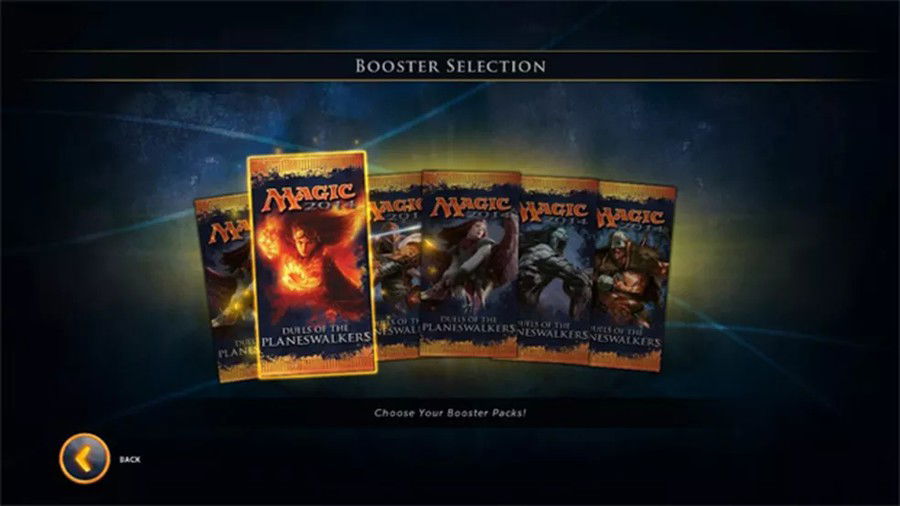
The main story shifts from being around the great villain Nicol Bolas to being around Chandra Nalaar, with her mission to track down an enemy Planeswalker. This was also the first title to start having animated cards, nothing as big as the current Magic Arena, something more like the promotional cards that have a 3D background, as if it were holographic, but it was a start in innovation.
The game features 10 new decks, 15 new encounters, 10 new puzzle challenges and ad-hoc multiplayer at launch, with online multiplayer functionality that arrived after its release as an update.
The tutorial has been greatly improved for this release and in an interview at E3 2013, Adam Dixon explained how important the game was to the player adaptation gap between electronic and tabletop.
But just like the other titles, all progress from the previous game was forgotten. This is a new game. In summary, it seems that they paid a lot of attention to this title, adapting to the technological evolution, putting the game in the palm of their hand with Android smartphones, which was well recognized at the time and continued to be a successful title!
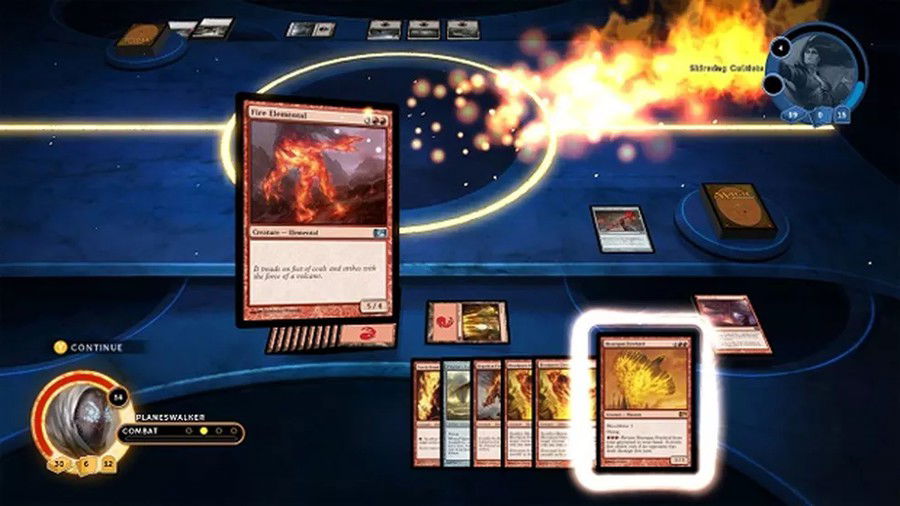
DotP 2015
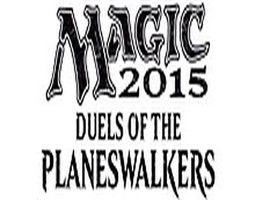
The last game in the series hit stores in 2014 for all platforms of the previous one, except PlayStation. So, we have the end of the series that started in 2009.
Ad
DotP 2015 features the main story around Garruk Wildspeaker, a planeswalker and animal master who was cursed by Liliana Vess, another planeswalker who tormented him, making him a cursed slave. The single-player mission is basically to build a deck powerful enough to defeat him.
There is also, of course, a multiplayer option, and despite all the other 4 titles in the series having come this far as a success and bringing news with each release, this game was very different, and the reviews were not so good. With few extra modes, a poor menu and some basic flaws, the game has practically nothing and the average on several review sites barely reached 5.
In PC Gamer Magazine, Tom Senior rated the game 30 out of 100: "At best, it's a frustrating, under-resourced experience than its predecessors. At worst, Magic 2015 is a cynical redesign that wants to suck up more money of players. As such, I cannot recommend Magic 2015 to anyone".
On IGN, a well-known gaming website, commented: "MTG: Duels of the Planeswalkers 2015 finally adds customization, but ruins it with microtransactions and dirty gameplay" and that "it's a shame that the 2015 version of this once-proud game feels best defined by what it lacks," then delivering a 4.5 out of 10.
Author's Note
Well, I would like to come to the end of this series of Duels of the Planeswalkers now saying that the series was a success and most left happy to have played all 5 games, but unfortunately, Duels of the Planeswalkers was something essential for the game, and it had its glory days, but now after a while, and with the release of Arena, it just seemed like marketing to attract new players to the physical game – being wasted all resources and especially time to start and end cycles without being able to continue with something that should have a sequel.
Many of us, when we start Magic, play one set and don't put it down for another — the cards and sets complement each other.
The separate games are good and can still be found for download on several of the platforms. Sometimes it makes me want to play Planechase late at night, for example, or I just want to play a game on the subway on the way to work and these games deliver, but as many things are measured by expectation, the series was great and fulfilled its purpose. paper, but finished with a sad ending.
Magic Duels Origins
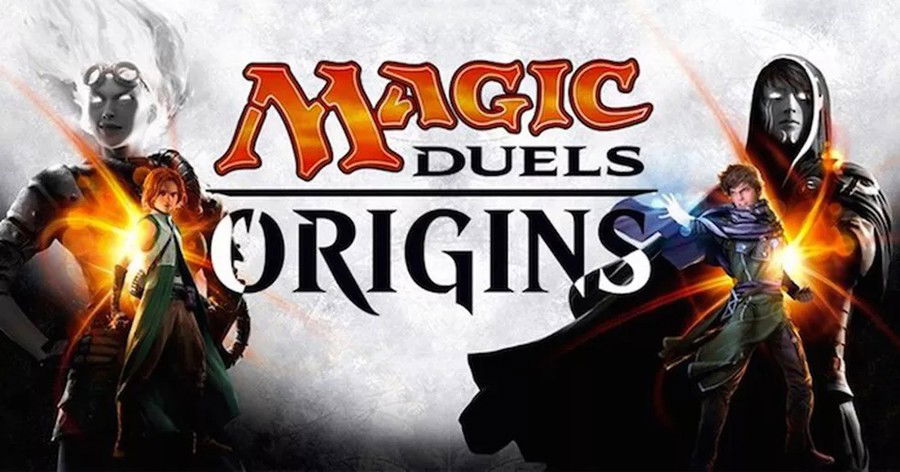
After the DotP endgame, the next game, also called Magic Duels Origins, hits stores a year after the last game, in July 2015 with the release of the Magic Origins tabletop set.
As the name implies, it brings us the origin of five of the most famous planeswalkers, one of each color: Chandra Nalaar, Jace Beleren, Gideon Jura, Nissa Revane and Liliana Vess.
The gameplay follows that of the conventional card game, with decks of 60 cards and 20 life points. It includes story mode and has freeform deck building and the ability to build a card library using in-game rewards (perhaps what everyone has been waiting for in DotP).
Ad
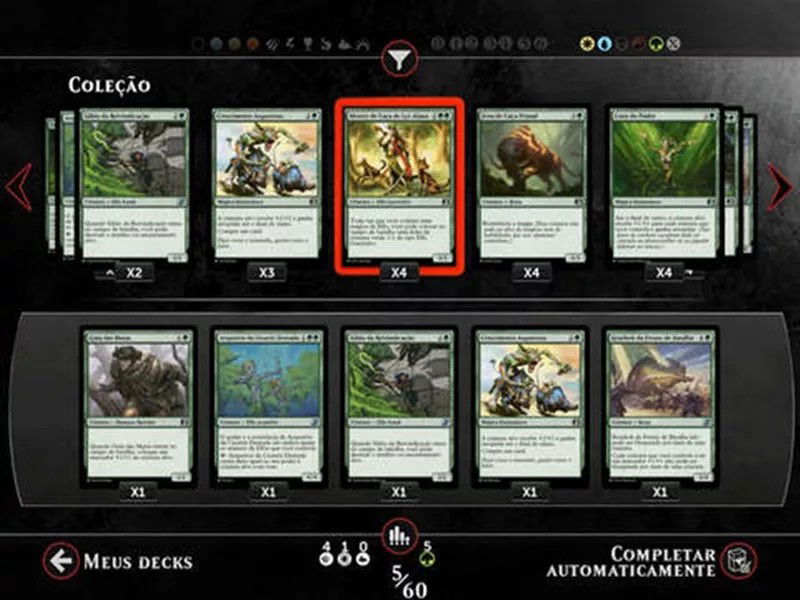
In addition, the game brought the novelty of using planeswalker cards to the electronic platform, something we didn't have before despite having advertisements for the cards in the online game.
It has single player versus AI battles mode and online mode with other players. In addition, something that also pleased many was the return of the option to play the Two-Headed Giant mode.
Like most titles in the DotP series, Magic Duels was offered to users on PlayStation 4, PC, Xbox One and IOS platforms, but unlike the previous series that would have new annual games, Magic Origins promised to be something bigger, ongoing, with new sets being released every year in the form of updates, but that's not exactly what happened.
Battle for Zendikar, Oath of the Gatewatch, Shadows Over Innistrad, Eldritch Moon, Kaladesh, Aether Revolt and Amonkhet sets were made available, in addition to the Magic Origins starter set, but we'll see what happened later.
To get new cards you could, in addition to buying booster packs with in-game coins (gold), buy with real money to create a true digital collection — but unlike what everyone expected, the game's days were numbered.
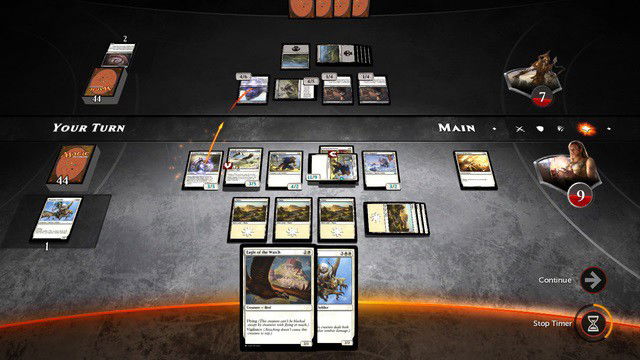
Regarding the reviews, the average of the places that evaluated it is between 6 and 7. The game didn't work well for PC on Windows 7 (now we don't know whether it was a problem with the game or system bugs), with several bugs reported, among them the scenery going all black and cards with the image cut out were the worst.
The game was also not cross-platform, which meant that if you were going to play in two different places, you would have to make two independent accounts and collections, in addition to having a significant restriction of being able to use only 2 rare cards per deck, limiting the real card game experience.
If those points weren't bad enough for the game, it was suddenly shut down in 2019, leaving many players who invested time and money in the hope of being something lasting as promised disappointed.
In the end, the game was a copy of the previous ones: it tried to innovate, but ended up with the same mistakes of Duel of the Planeswalkers and worse, making users think twice about purchasing new Magic: The Gathering electronic games: being beautiful, with great gameplay, with a long expectation of duration, but that doesn't hold enough water on its own.
Magic: The Gathering – Puzzle Quest
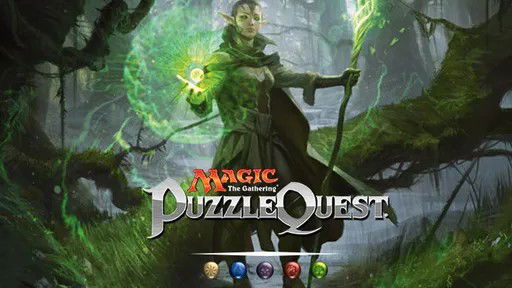
In the same year as Origins, 2015, this very interesting puzzle-style mobile game was released with reference to the Magic universe, developed by D3 publisher. Available for iOS and Android, the game resembles Candy Crush, where you must match gems of the same color on a board to generate mana and make spells, support cards or creatures to defeat your opponent. It is quite different from the conventional card game as it has a lot of luck interference in matching the gems and can be a bit complex to play as you go along.
Ad
You must build a deck of 10 cards that are the same as in the physical game, but with an adjustment in cost and certain effects to balance with the platform. Each player starts with 3 cards in hand and the life points that the planeswalker has - each planeswalker has a different amount of life.
Cards have a sequence and whenever you combine gems, when you reach the mana needed for the first card in the sequence, it is used, and the excess mana goes to the next card in your hand. If it's a creature it enters the battlefield, if it's a spell it's used, and if it's a support it enters the battlefield.
Unlike the card game, you don't have the steps sequenced, and you can't block with any creature or cast spells in the second main step, the attack damage is direct unless the creature has some ability that requires it to block as a defender, or reach. In this case, the creature will automatically block in the order in which the attackers are (also not chosen).
Whoever drains the opponent's life to zero first wins. As mana is generated by combining gems or with some effect, lands are part of support cards, and usually stay on the board. They serve to carry out activations of effects at each action or moment. Land cards, for example, transform gems or generate extra mana each turn.
Something that also interferes a lot in matches are the abilities of planeswalkers. Kiora, for example, can generate mana, tutor a creature, or create multiple octopus tokens.
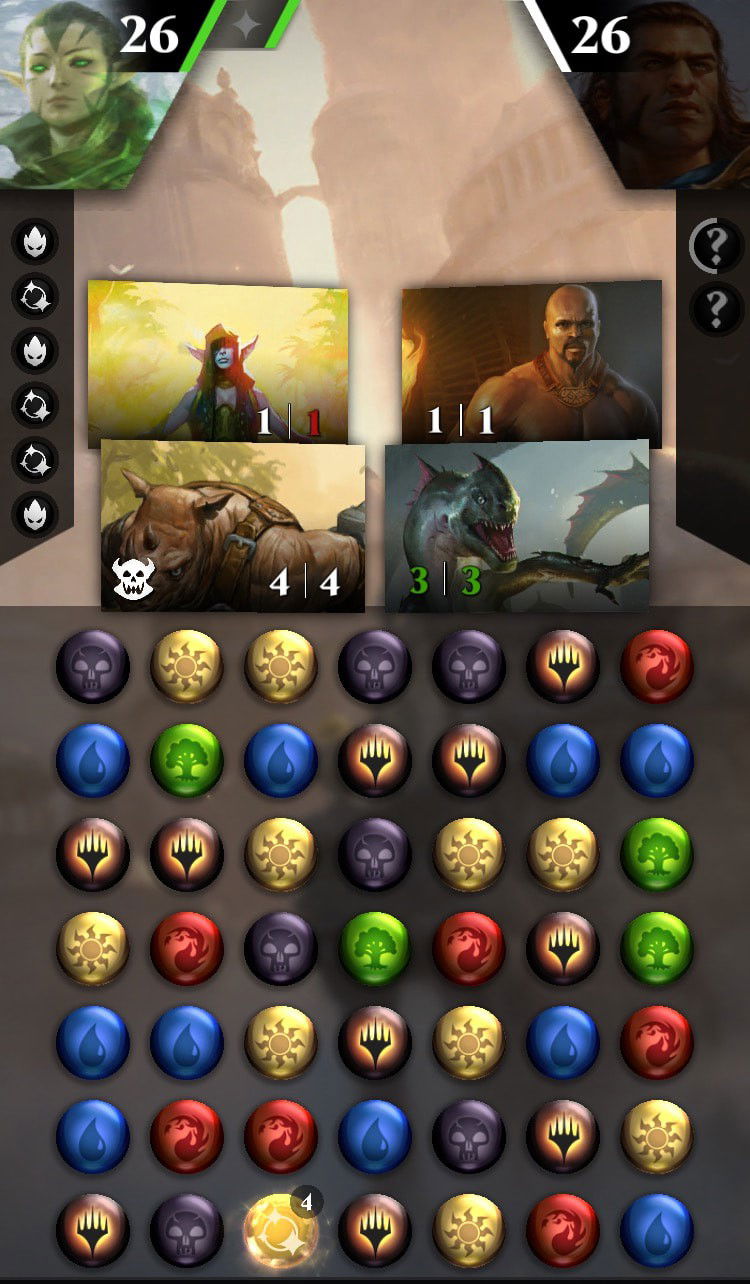
Something really cool is that Magic Puzzle Quest returns to talk about the history of the Magic universe in a very broad way. All Planeswalkers have a large chunk of text talking about each one.
Challenge/Story objectives and modes explore the Card Game planes and universe in a very broad way. The game's economy revolves around 3 "currencies": Mana Rune, Mana Crystals and Mana Gems, each responsible for a specific part of the game.
Runes are the standard currency used to level up your planeswalker up to level 60. As you level up, your abilities increase as well. Planeswalkers gain more health with each level and have more bonuses for matching certain colors. Runes are earned by completing objectives, quick battles and also in story mode.
Crystals are something more premium, used to buy new planeswalkers and also booster packs with new cards. You get new Crystals in Daily Rewards and Side Objectives in Story Mode. Another place to get them is in the in-game store. As with all games of the style, it's free to play, but, you know, if you want to get ahead, just pay a few bucks for crystals.
Gems are used for one thing only: to purchase elite packs that cost 150 to 400 Gems depending on the edition and rarity, and usually, you get a Mythic or Rare card with a chance to be a masterpiece in them.
Despite being different from the card game, it has been updated with each new tabletop set since its launch, and with that, we assume that there are enough people playing to keep it.
Ad
The game itself is fun, but sometimes frustrating when the opponent has a much stronger deck/planeswalker, or simply combines gems very well (either lucky for them or unlucky for you). Among the criticisms, the game works well, is beautiful and balanced, a little different from the card game, but the proposal is not to be a simulator of it, so it does what it promises and has fun.
To play it, just go to your smartphone's app store and download it.
Magic: The Gathering Arena
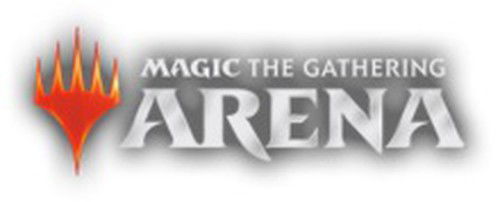
We're almost at the end of our list of games, and now it's time for Arena, the showcase of modern times and the most talked about (good or bad) Magic video game of our time.
Starting in 2017 with a closed beta, Arena was born, needing to break a huge taboo of not being just another DotP with another name after WotC launched several titles and discontinued.
Officially released for Windows in 2019, Mac in 2020 and recently made available for iOS and Android in 2021 and with multi-functionality platforms, that is, playing with the same account on mobile or PC, the game is undeniably beautiful and easy to understand by new players.
With a face identical to previous simulators, the game tries to solve all the problems, such as creating a collection by opening booster packs, being free-to-play and being able to modify the deck at will without having limitations on the deck.
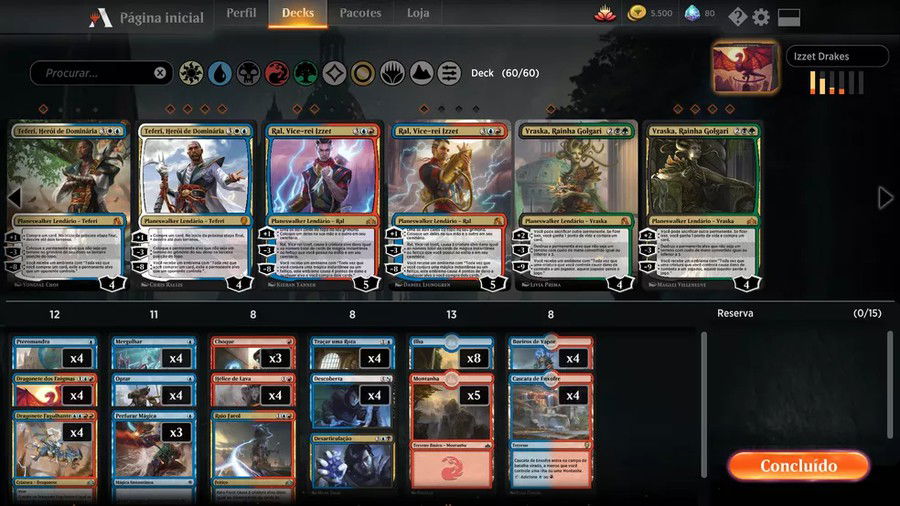
Magic Arena attracts young and new players a lot, drawing attention to the card game universe. The focus of the game is to simulate a table, 1v1, and therefore it contains several multiplayer game formats, where you can play against another human opponent online, or against the AI, in different formats and challenges.
Game Modes in Arena
There is a simple tutorial that explains the rules of Magic: the Gathering in Arena well. In addition to the tutorial, there are several game modes on the platform:
- Standard: format identical to real life Standard, where legal sets rotate.
- Alchemy: is the new game mode in MTG Arena based on the Standard format that incorporates cards exclusive to the digital game. These cards will be constantly rebalanced to create a fast-paced and ever-evolving experience for our players. The decks will be the size of the Standard format.
- History: Historic is Magic: The Gathering Arena's most open format, full of unique strategies, insane synergies, and almost every card available in MTG Arena. Historic never rotates and is curated as a digital-only format.
- Brawl: This platform has a "Commander". Brawl has a bit of Standard, a bit of Commander, and it's a challenge for deck building.
- Booster Draft: Players open booster packs and take turns choosing cards from the booster pack. Then they prepare a deck of 40 cards.
- Sealed Deck: Each player opens six booster packs and competes with a deck of 40 cards drawn from those booster packs.
Ad
* In addition to these formats, there are others that come and go within the platform, such as Pauper Standard, Momir and the like. It is important to always be aware of new events, and in all of them there is a tutorial explaining the rules.
Deck building is free, you assemble a true collection and with each victory or complete objective, you receive gold coins that can be exchanged for certain items, such as booster packs.
Arena Currency
There is another in-game currency, Gems, which are a more premium “currency”, either rewarded in specific events or purchased for real money. You can buy pretty much everything in the game with them, from avatars, skins to cards and pets, even Wildcards.
And this last point is one of the main criticisms of the players. In addition to the limitation of the card exchange option (which does not exist in the game), absence of spectator mode and not having the most played format (Commander), the game suffers from being heavy and bugs/crashes sometimes during use, but it has improved a bit.
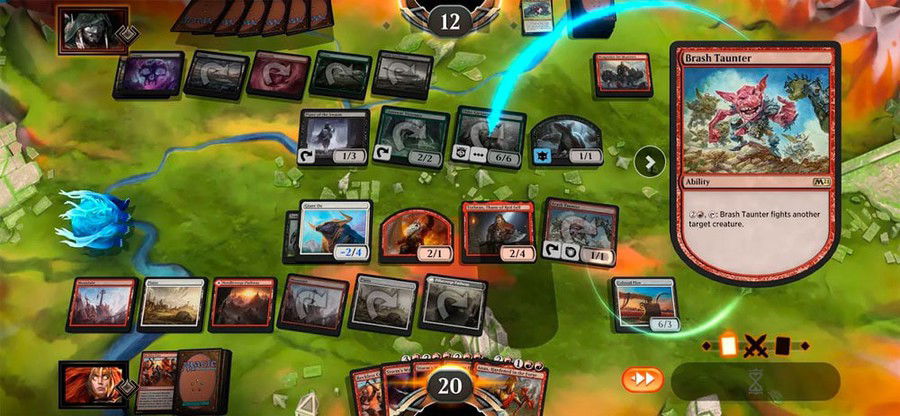
Reflecting on the platform
It's hard to say what Magic Arena was designed to be. In many places, they claim that it was created to be the most modern way to play Magic, in others, that it should be a separate game without identification and connection with the physical game like Magic Online is. It would be a unique online form of entertainment. This uncertainty occurs because, when we look back, several questions remain unanswered, such as: Why isn't there a spectator mode if even the game's World Championship has already been broadcast (in a palliative way) on the platform?
We must remember that Magic: The Gathering is a Trading Card Game, and therefore it has the (important) part related to the encounter, the socialization, the exchange of cards from the collection that do not interest you for others – but Magic Arena doesn't provide this experience.
The only way you can interact during matches is through simple standardized words, such as “Hi”, “Your turn”, “Good!”, while outside of matches, interaction is reduced to a simple chat.
With the entry of more formats that only exist in electronic media, such as special sets and the Alchemy format, where card nerfs and adjustments can be performed without problem, more and more Magic Arena is no longer a true simulator of the game and becomes really a separate game with the purpose of promoting and stimulating new players. Like Magic Puzzle Quest, Magic Arena ends up being a good hobby aside – however, having more similarities with the card game.
Magic: Legends
To close our list of electronic games, we have Magic: Legends, the youngest game on our list, as it only lasted a few months from its beta released in March 2021, until it was announced in June of the same year that it would be shut down before the official launch, and its servers were turned off in October 2021.
Ad
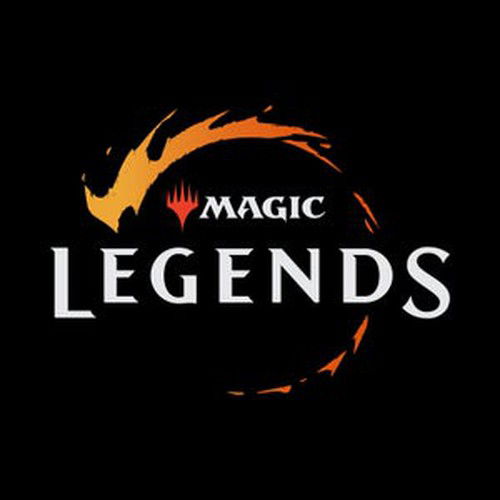
We don't have much to say about it, just the record of who managed to sign up for the tests. The game promised to be a simultaneous action RPG game, reminiscent of titles like Diablo.
In Magic: Legends, the main player should choose a planeswalker who can cast creatures and spells from the Magic: The Gathering universe. As you advance and evolve in the game, your character gains more spells and creatures for the repertoire (deck).
As the game was discontinued, we don't know what it would be, only that it still had beautiful graphics in beta and an attractive gameplay with interesting references to the card universe, but with critical performance problems (but we must remember that it was in beta).
Regarding its cancellation, Stephen Ricossa, Game Director, said that the game "missed the mark" and that the companies that created and were developing it did not intend to return to it without going into more detail.
Video from Magic: Legends:
Conclusion
Coming to the end of our two parts, we get a broad look at the entire electronic history of our card game over the last 25 years, from its first title back in Shandalar to today.
An important issue that should be mentioned was the evolution of technology and its impact. As we saw in the first part, before electronic games, for the most part (and this goes for other games in general as well), underwent a radical change with the expansion of the Internet. Games, previously focused on the experience of a person playing alone against AI, have had to adapt to a networked world, where more and more people seek to socialize. It is not by chance that the Commander format is the most played — we are social beings.
Another point that should draw attention is that we must always align our expectations with reality, as they can end up greatly influencing what we expect from a game, even more so when we talk about something based on Magic: The Gathering, which is set to celebrate its 30th anniversary next year.
Magic has developed, adapted to society throughout this time, and we see several relevant changes over these 3 decades. Several positive points, others not so much, but something that must be considered is what we will expect from each game/platform. If you want to have the gaming experience like the physical one, MTGO would be the closest, even though it's "ugly" and having an analogue platform, you have a healthy savings for an online collection, but you might not carry it in your pocket with your smartphone.
Now if you are not interested in old formats, want something more beautiful, current and simply play quick games of Magic without caring much about collection, Magic Arena is there, with its restrictions, but it works well, in addition to being beautiful and running cross-platform on smartphones.
And, if your goal is just to find an arcade game to pass the time, about the game and to know a bit more about the history of each planeswalker and the planes, Magic Puzzle Quest is a lot of fun and works well on mobile.
Ad
The important thing is to always seek what pleases us and meets our expectations/needs. Besides, who said it can only be one or the other? Test, experiment, and of course, if you don't like it, question and complain, improvement must be part of the process and always continuous!
I hope you enjoyed these two articles, the story behind the current games we have and if you have any comments or suggestions, please leave them in the comments.
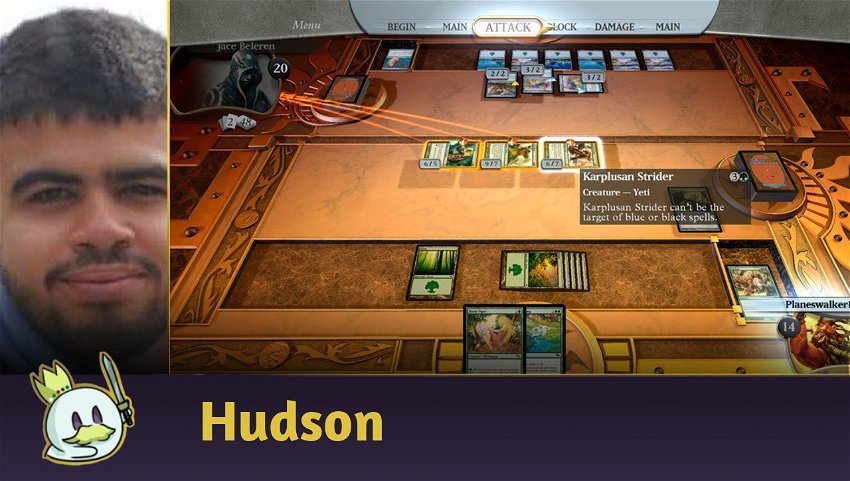



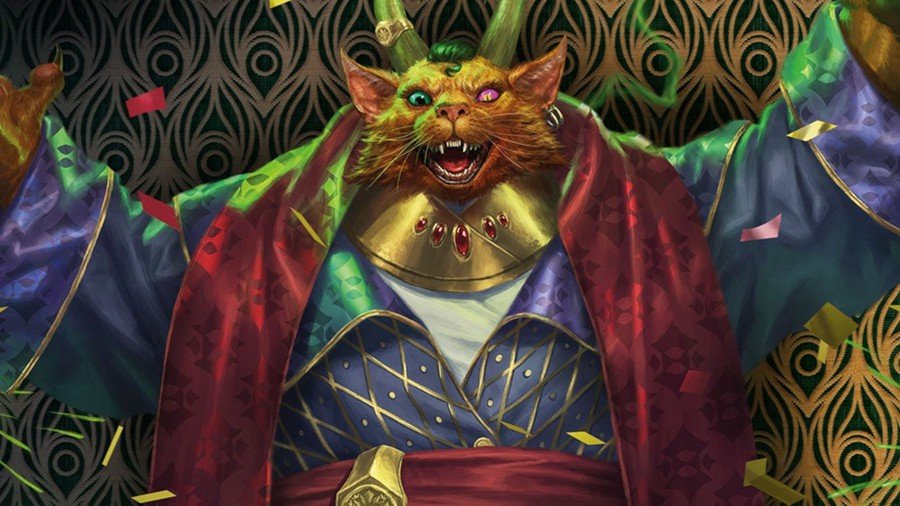
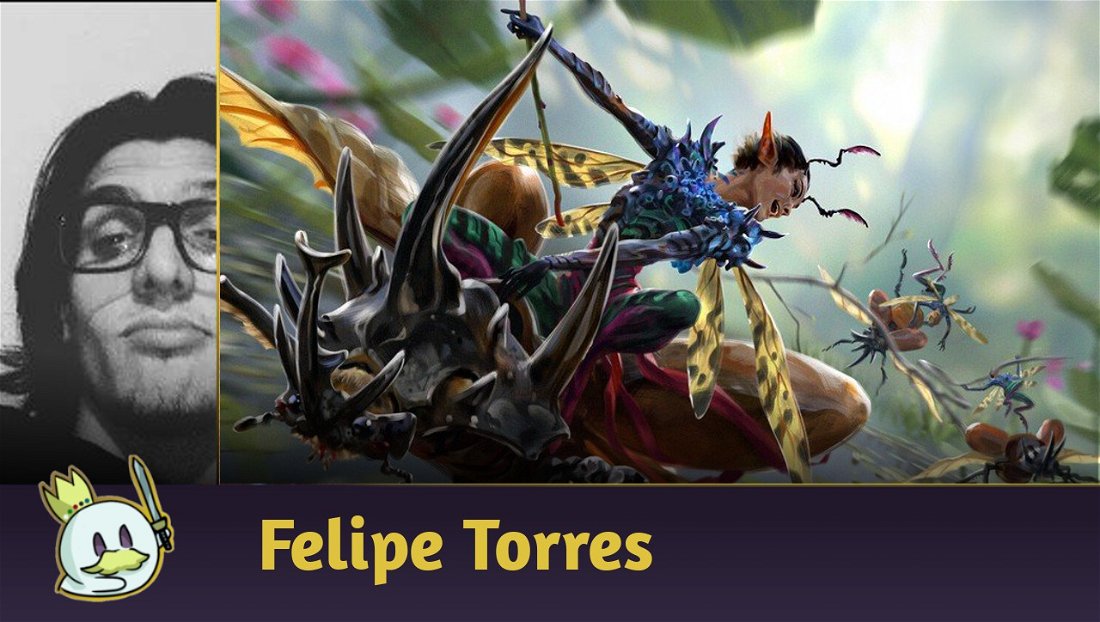



— Kommentare0
Sei der erste der kommentiert